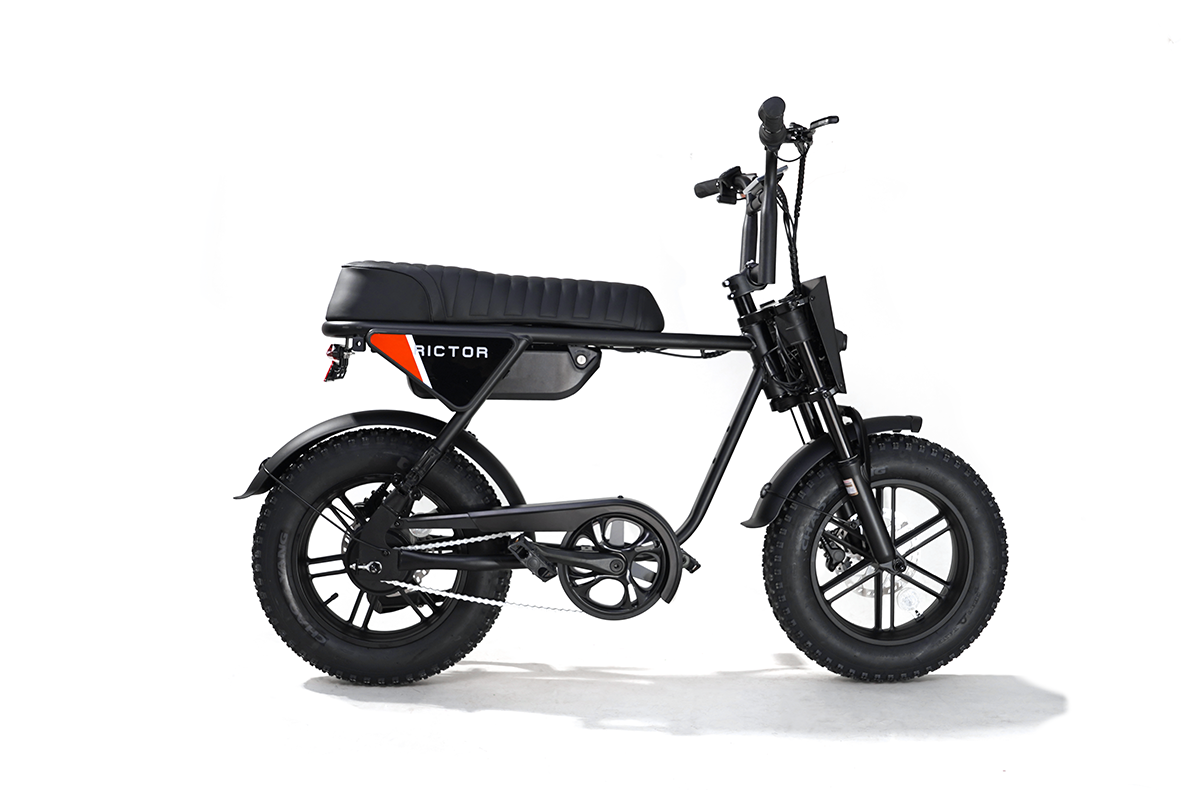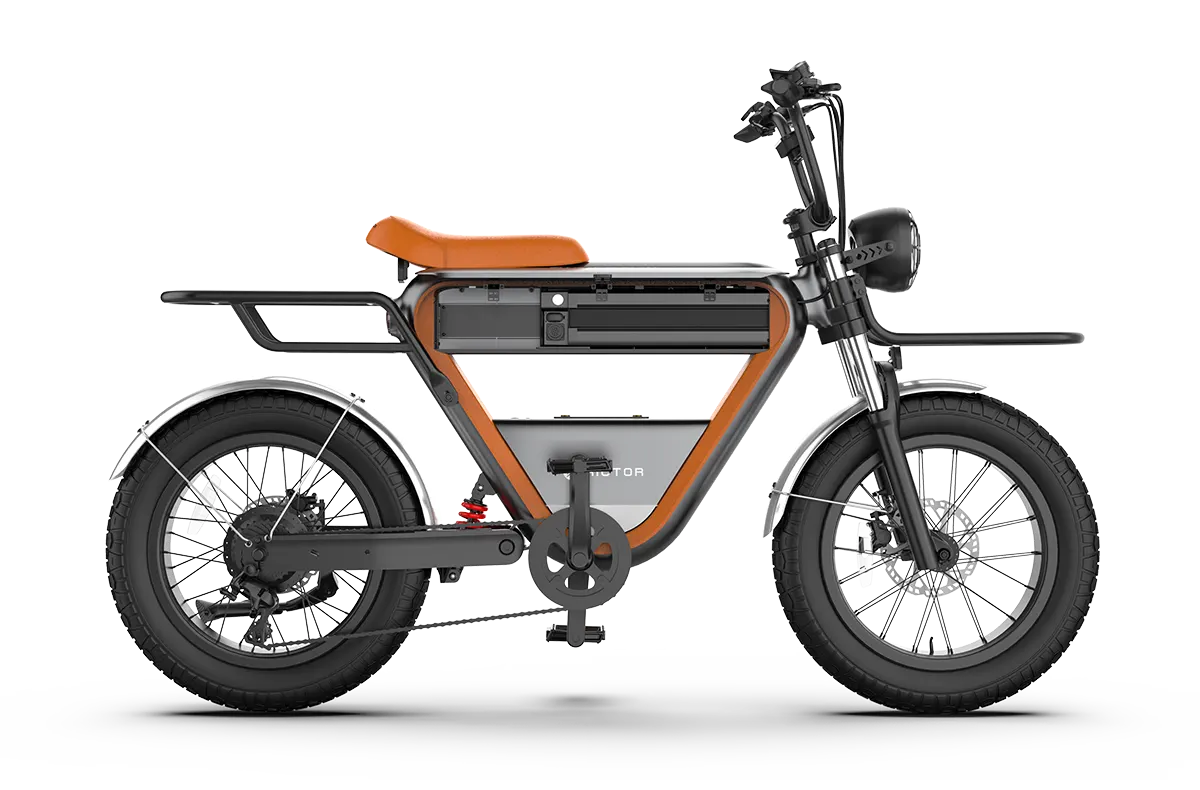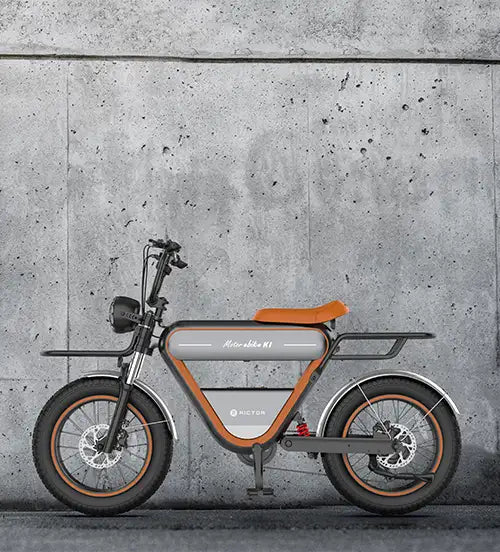
Full Suspension vs. Hardtail: Which Is the Best Option for You?
When you're deciding between a full suspension and a hardtail electric bike, you're not just choosing between two designs—you're selecting a whole riding experience.
This comprehensive guide dives into the nuances of each type of bike, breaking down the details that can affect your riding experience.
What Is a Full Suspension Electric Bike
A full suspension electric bike is designed with both front and rear shock absorbers, offering a smooth, controlled ride over rough terrain.
The combination of a front fork and a rear shock absorbs impacts from bumps, rocks, roots, and rough trails, making it a favorite choice for serious off-road enthusiasts.
Core Features of Full Suspension Bikes
-
Dual Suspension System: The front and rear shock absorbers work together to mitigate the impact of the terrain, making the ride more comfortable and less jarring.
-
Increased Traction: With dual suspension, the tires maintain consistent contact with the ground, enhancing grip, stability, and control.
-
Designed for Technical Terrain: Full suspension bikes are optimized for tackling rocky paths, steep climbs, and rapid descents with ease.
-
Greater Comfort: The bike absorbs much of the shock, reducing strain on your body and allowing you to ride for longer distances without feeling fatigued.
Advantages of Full Suspension Electric Bikes
-
Superior Comfort on Rough Terrain: Full suspension is designed to absorb the shock from uneven surfaces, offering a smooth ride over rough or rocky trails. This reduces the stress on your body, allowing for longer rides without discomfort.
-
Better Control on Steep and Technical Trails: When riding downhill or on trails with loose gravel and obstacles, the added suspension gives you more control, keeping your tires grounded and reducing the risk of losing traction.
-
Enhanced Stability: Full suspension bikes offer superior stability, especially during rapid descents, technical terrain, and unpredictable conditions.
-
Faster and Smoother Handling: The rear shock allows the bike to stay more responsive on uneven terrain, meaning you can navigate obstacles with precision and maintain speed over bumps and jumps.
When Should You Choose a Full Suspension Electric Bike
A full suspension bike is ideal if you plan to ride in areas with technical trails, downhill sections, or rocky, challenging surfaces.
This is the preferred choice for mountain bikers, trail riders, and anyone looking to conquer rugged terrain with added comfort and control.
If you're an experienced rider or you love the idea of exploring off-road paths with a smooth and stable ride, a full suspension electric bike(Like Rictor K1 electric bike) will provide the performance you need.
SEE ALSO Why You Should Buy a Full Suspension Electric Bike
What Is a Hardtail Electric Bike
A hardtail electric bike, on the other hand, has front suspension only and a solid rear frame.
This design is simpler, lighter, and more affordable than a full suspension bike. Without the extra shock absorbers on the rear, hardtail bikes rely on the flexibility of the frame and the front fork to absorb impacts.
Core Features of Hardtail Bikes
-
Front Suspension Only: Hardtail bikes are equipped with a suspension fork on the front wheel, which helps absorb shocks from obstacles like rocks, roots, and bumps.
-
Lightweight and Efficient: The absence of rear suspension means hardtail bikes tend to be lighter, offering better pedaling efficiency, especially on smoother terrain.
-
Simpler Construction: With fewer moving parts, the construction of a hardtail is less complex, which translates to easier maintenance and lower repair costs.
Advantages of Hardtail Electric Bikes
-
Lightweight Design: With no rear suspension, these bikes are lighter than full suspension models, making them easier to handle and maneuver, particularly on climbs or during long rides.
-
More Pedaling Efficiency: Since there’s less energy lost in suspension travel, hardtail bikes provide better pedaling efficiency on smoother surfaces, making them faster and more efficient on flat trails and roads.
-
Lower Cost: Hardtail bikes are generally more affordable than full suspension models, thanks to the simpler construction and fewer components.
-
Easier Maintenance: The absence of a rear shock means there are fewer parts to maintain, making hardtails less prone to mechanical issues and requiring less frequent servicing.
-
Better on Paved Roads: If your rides consist mainly of smooth trails, paved roads, or gravel paths, a hardtail offers a more direct and efficient riding experience with less suspension travel to drain energy.
When Should You Choose a Hardtail Electric Bike
Hardtail electric bikes excel when riding on cross-country trails, gravel paths, or smooth, paved roads.
They’re ideal for riders who don’t require the extreme comfort and control provided by full suspension but still want a high-performance bike for efficiency and speed.
If you enjoy long distance riding, prefer an easier-to-transport bike, or are looking for a more budget friendly option, a hardtail electric bike is a perfect fit.
Comparing Full Suspension and Hardtail Electric Bikes
Comfort and Ride Quality
-
Full Suspension: Offers a significantly smoother ride over rough terrain, absorbing shocks from both the front and rear of the bike. It’s the go-to choice for tackling technical terrain.
-
Hardtail: Provides a firmer ride, especially on rough or rocky trails. It’s better suited to smooth surfaces or less technical terrain, where comfort is less of an issue.
Performance on Different Terrains
-
Full Suspension: Provides better handling on downhill rides, loose gravel, rocky paths, and rough, uneven trails. If you frequently ride mountain trails or want to take on technical obstacles, a full suspension electric bike is ideal.
-
Hardtail: Better for cross-country rides, smoother dirt paths, and paved roads. It’s efficient and fast on flatter surfaces, where a smoother ride isn’t as crucial.
Cost
-
Full Suspension: Generally more expensive due to the additional components (rear shock, more complex frame), but it’s worth the investment for riders focused on extreme trails or serious mountain biking.
-
Hardtail: A more budget friendly option, with lower upfront costs and lower long term maintenance costs. Perfect for beginners or those looking for an affordable electric bike for daily commutes and recreational rides.
Conclusion
Choosing between a full suspension and a hardtail electric bike ultimately comes down to your riding preferences, the type of terrain you frequent, and your budget.
If you’re an avid off-road rider looking for maximum comfort, control, and performance on challenging trails, a full suspension electric bike is the way to go.
However, if you’re more focused on cross-country riding, smooth trails, or daily commuting, and prefer a lightweight, cost-effective option, a hardtail electric bike is a solid choice.
FAQs
Which type of bike is better for beginners?
A hardtail electric bike is often recommended for beginners due to its simpler design, lower cost, and ease of use on smoother terrain.
Can a hardtail handle rough trails?
While hardtails can handle light to moderate rough trails, they may not perform as well on very technical, rocky, or downhill terrain compared to a full suspension bike.
Is a full suspension electric bike more expensive to maintain?
Yes, full suspension bikes typically require more maintenance due to the added complexity of the rear suspension, but they offer superior performance on rough terrain, making the extra cost worthwhile for avid off-road riders.





